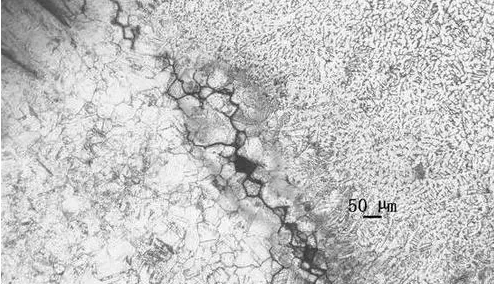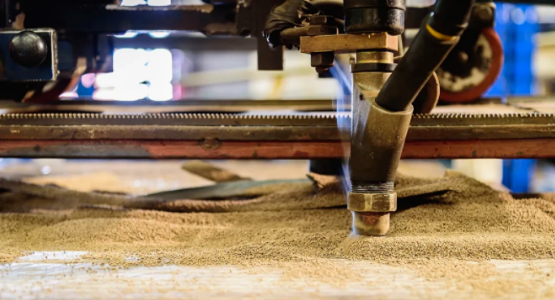Welding cracks as the most harmful class of welding defects, seriously affecting the performance and safety and reliability of welded structures. Today, we will take you to recognize one of the types of cracks – laminated cracks.

01
Non-metallic inclusions, steel plate in the rolling process will be some non-metallic inclusions within the steel, etc. (such as sulfides, silicates) rolled into a band parallel to the direction of rolling, resulting in variability in the mechanical properties of steel, inclusions are welded structures to produce laminar tearing of potential factors, but also the main reason for the production of laminar tearing.
02
Constraint stress, due to the welding thermal cycle, welded joints will appear constraint force, for a given rolled thick plate T-shaped and cross joints, in the welding parameters under the conditions of the same conditions, there is a critical constraint stress or bending constraint strength, when greater than this value is prone to produce laminar tearing.
03
Diffusion of hydrogen, hydrogen is a promoter of cracking, due to the diffusion of hydrogen and combined into a molecule so that the local stress increases dramatically, when hydrogen gathered in the inclusions at the end of the promotion of non-metallic inclusions and metal loss of adhesion, and will be pulled off the neighboring inclusions in the metal, in the fracture of hydrogen fracture characteristics.
04
Parent material properties, although inclusions are the main cause of laminar tearing, but the mechanical properties of the metal also has a very important impact on laminar tearing. The poor plastic toughness of the metal, the more likely to crack expansion, that is to say, poor resistance to laminar tearing.
Translated with www.DeepL.com/Translator (free version)

Xinfa welding equipment has the characteristics of high quality and low price. For details, please visit: Welding & Cutting Manufacturers – China Welding & Cutting Factory & Suppliers (xinfatools.com)
In order to prevent the generation of laminar cracks, the main thing in design and construction process is to avoid Z-direction stress and stress concentration, the specific measures are as follows:
1. Improve the joint design to reduce the constrained strain. Specific measures such as: will lead the arc plate end extension of a certain length, have the effect of preventing cracking; change the weld arrangement to change the direction of the weld contraction stress, the vertical arc plate to horizontal arc plate, change the position of the weld, so that the joint of the total direction of the force parallel to the rolled layer, can greatly improve the performance of the anti-laminar tearing.
2. Adopt appropriate welding method, the use of low hydrogen welding method is favorable, such as gas shielded welding, submerged arc welding cold crack tendency is small, is conducive to improve the performance of anti-laminar tearing.
3. The use of low-strength matching welding materials, weld metal has a low yield point, high ductility, easy to make the strain is concentrated in the weld and reduce the heat-affected zone of the base material strain, can improve the performance of anti-laminar tearing.
4. In the use of welding technology, the use of surface surfacing isolation layer; symmetrical welding, so that the strain distribution is balanced, reducing strain concentration.
5. In order to prevent laminar tearing caused by cold cracking, we should try our best to adopt some measures to prevent cold cracking, such as improving preheating and controlling the interlayer temperature, etc. In addition, we can also adopt the stress relief methods such as intermediate annealing.
6. We can also control the size of the weld, using small welding feet, multi-channel welding process.
Translated with www.DeepL.com/Translator (free version)
Post time: Aug-24-2023



